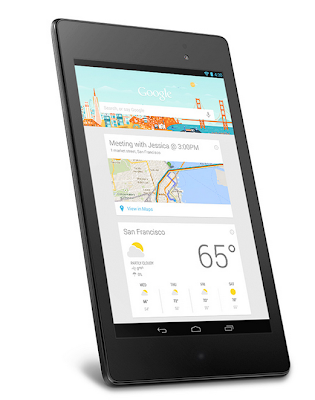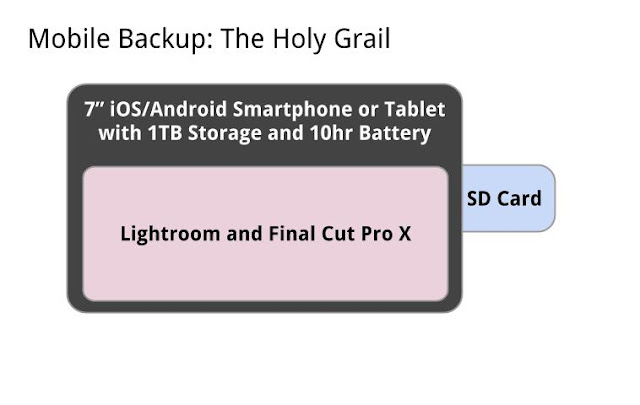[Sorry for the long gap between posts.It’s been a busy summer with motorcycle stories among other things.]
A couple of years ago I bought an Apple iPad 2 stuffed with the maximum 64GB of memory to backup my photographs when on the road. With the optional camera connection kit (two white dongles that let you connect an SD card or USB device to the iPad), it’s served me quite well, camping in PA, in the wilds of Quebec, the fantastic deserts of Southern Utah, and lots of places in between. I’ve been able to backup photos, do some basic Snapseed editing, and do some social sharing to make office-bound middle managers envious of my adventures.
And then I went and did a stupid thing…I started shooting more video. If you thought that the 36 megapickle files from the Nikon D800 where huge, try shooting some 1080P HD video. Those files will eat up your storage space faster than you nom on breadsticks at your favorite Italian ristorante. To make matters worse, I hacked my Panasonic GH2 with the 100Mbps Flowmotion patch and watched the 64GB iPad quiver in fear.
Time to re-evaluate mobile backup.
I guess that I could just get a new Retina iPad with 128Gb and be done with it, but I’d worry that I’d max out the memory rather quickly. And there’s no way to connect an external hard drive to an iPad except via a wifi connection; that would be kind of slow transferring gigabytes of data at the end of a day. So the search is on for the perfect mobile backup device.
There are a small handful of
pro backup gadgets for photographers; I can tell that they are pro by the prices that they are asking for their modest storage capacities. Were I in a theatre of conflict, filing photos every day from bunkers and quonset huts, I might be able to justify the cost. But I’m looking for something more cost effective, and less proprietary. And call me superficial, but I’d rather that it looked like something from this century.
This, in a nutshell, is what I’d love:
But I know that that’s not happening anytime soon. So I’m willing to accept this:
I’ve been interested in Android tablets lately, mainly because many of them have SD or mini SD card readers and. They also seem more capable of connecting with hard drives. And while the iPad is appreciably smaller than the HP Mini 2140 netbook that it replaced in my camera bag, I’d like to go smaller still, towards a 7” tablet. This is motorcycle travel that I’m talking about, and I’m often hauling this stuff on my back, so smaller is almost always better or at least worth a look.
 |
| Google Nexus 7 (photo by Google) |
When rumors of the new Google Nexus 7 started circulating, I thought, “Hmmm…maybe…” At first glance the specs look pretty good – HD screen, good battery life, up to 32GB memory, etc… But that’s where the story ends–no SD card reader. Sure you could get a dongle, but those little buggers are easy to lose in a Vegas hotel room; don’t ask me how I know that. Models from Samsung, Lenovo, and others are also missing the boat. Some have an SD card reader but so little on-board memory that users have to use the SD slot to store apps and data. In order to backup with the Nexus 7, I’d need both an SD card reader and an external hard drive, along with all of the cables and stuff (all easily losable) that go along with it.
There’s a growing swarm of people roaming the planet with high megapickle cameras and HD POV video cameras. At the end of the day, many of us have gigabytes upon gigabytes of photos and videos that we’d love to download, backup and review on a tablet and maybe even share some of the more epic shots with the folks back home. Sure, I could bring a laptop, but I want to travel light. I want to shoot primes. I want to shoot mirrorless. I want to carry it all comfortably on my shoulder without resorting to a camera bag the size of a small generator.
Oh Google where art thou?! You’ve come that close (my fingertips are mere millimeters apart) from creating the perfect photographer’s mobile companion with the Nexus 7, so tantalizingly close. But you’ve swung and missed.




